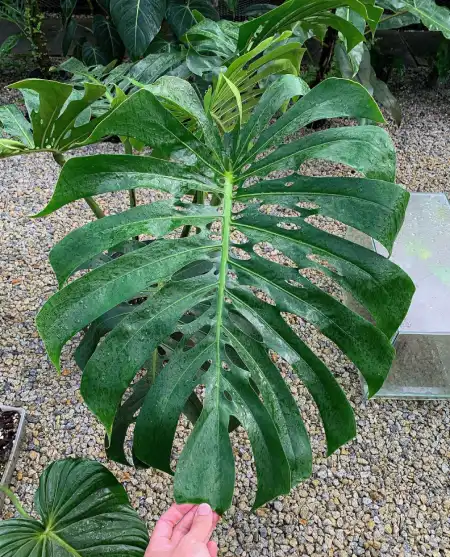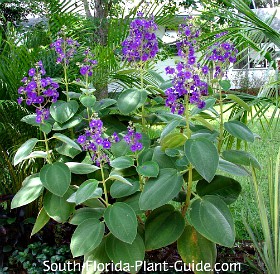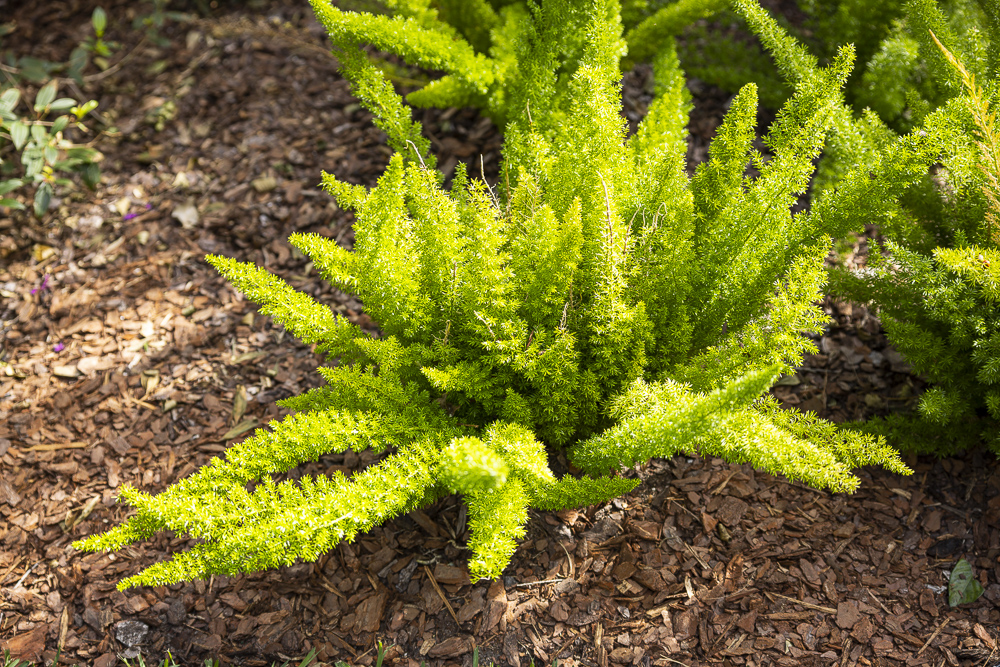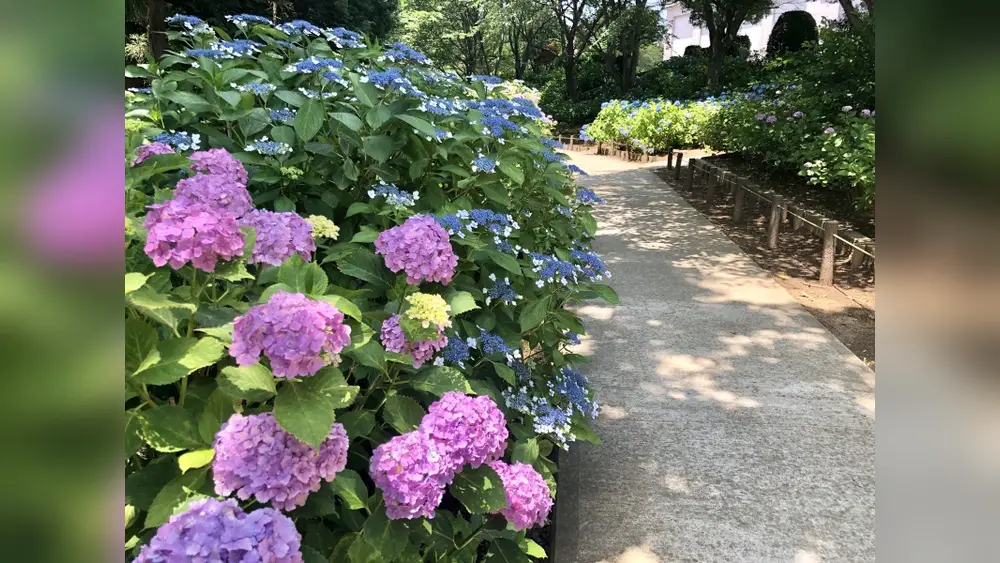If you’re gardening in Florida, you know the challenge: finding plants that thrive in the shade without losing their vibrant beauty. You want your shady spots to be just as lively and inviting as sunny areas.
The good news? There are plenty of shade-loving plants perfectly suited for Florida’s unique climate that can transform your garden into a lush, colorful retreat. Whether you’re looking for flowering shrubs, tropical palms, or eye-catching groundcovers, this guide will help you discover the best shade plants for Florida.
Keep reading to find the perfect green companions that will flourish in your shaded spaces and make your garden stand out.
Florida Shade Plant Varieties
Florida offers a rich variety of shade plants suited for its warm climate and unique soil. These plants thrive in shaded garden areas, adding color and texture. Choosing the right shade plants can brighten dark corners and create a lush, inviting space. Many options fit well in Florida’s environment, from flowering shrubs to groundcovers. This diversity helps gardeners find plants that match their style and garden needs.
Below are some popular Florida shade plant varieties grouped by type. Each group has plants that perform well in partial or full shade. They bring beauty and life to shaded areas in Florida gardens.
Azaleas stand out as vibrant flowering shrubs for shady spots. They bloom in spring and provide color when in flower. Begonias offer bright flowers and colorful leaves, perfect for shade. Camellias bloom in winter and add elegance to shaded gardens. Hellebores, known as Lenten roses, flower early and tolerate shade well. Coral Bells show off colorful foliage and delicate flowers. These plants handle Florida’s shade and bring color year-round.
Bromeliads thrive in shade and add exotic flair. Caladiums show large, colorful leaves that brighten dark spaces. The Areca palm grows well in filtered light, creating a tropical look. Florida Thatch palm adapts to shaded areas and is low maintenance. Foxtail ferns bring texture with their soft fronds. Variegated shell ginger offers broad, patterned leaves that catch the eye. These plants create a tropical vibe in Florida shade gardens.
Mondo grass forms a dense, dark green mat under trees. Asiatic jasmine is a fast-growing groundcover with glossy leaves. Creeping fig climbs walls and fences, adding greenery to vertical spaces. Sweet woodruff spreads quickly and works well in shade. These groundcovers and vines control weeds and fill garden beds with lush green. They are practical and attractive choices for Florida’s shaded gardens.
Native And Unique Choices
Florida’s native plants suit the local climate and soil best. Coontie is a slow-growing shrub with fern-like leaves. Wild ginger spreads low and produces small flowers. Beautyberry offers bright purple berries that attract birds. These natives require less water and care once established. Choosing native plants supports local wildlife and keeps gardens healthy. They add unique charm to shaded Florida gardens.

Credit: jmclandscapingfl.com
Flowering Shrubs And Perennials
Flowering shrubs and perennials brighten shady gardens in Florida. These plants thrive with limited sunlight. They add color and texture to dark corners. Many have vibrant blooms and attractive leaves. They stay healthy in Florida’s warm, humid climate. Choose plants that fit your garden’s size and style. This selection will flourish under trees or in shadowed spots. Here are some top choices for shade-loving flowering shrubs and perennials.
Azaleas
Azaleas are classic flowering shrubs for shade. They bloom in spring with bright flowers. Their colors range from white to pink and red. Azaleas prefer well-drained, acidic soil. They enjoy filtered sunlight or partial shade. These shrubs also have attractive green leaves all year. Azaleas fit well under tall trees or on shaded slopes.
Begonias
Begonias are popular perennials with colorful blooms and leaves. They grow well in shady areas with moist soil. Begonias offer flowers in red, pink, white, and orange. Some types also have striking foliage patterns. These plants bloom from spring to fall. They brighten shady spots with constant color and charm.
Caladiums
Caladiums thrive in the shade with their vibrant leaves. Their leaves show red, pink, white, and green patterns. They prefer warm temperatures and moist soil. Caladiums grow well beneath trees or on shaded patios. These plants add tropical flair to any shady garden area. Their leaf colors brighten dark spaces beautifully.
Bromeliads
Bromeliads are tropical plants perfect for Florida shade gardens. They have stiff, colorful leaves and unique flower spikes. Bromeliads grow well in filtered light or deep shade. They need well-drained soil and moderate watering. These plants attract birds and insects to the garden. Bromeliads add exotic beauty and texture in shady spots.
Coleus
Coleus is known for its vivid, multicolored leaves. It thrives in partial to full shade. Coleus prefers warm weather and moist soil. This plant adds bright reds, purples, and greens to shady beds. It grows well in containers or garden borders. Coleus provides a splash of color where flowers may not bloom well.
Tropical Plants And Palms
Tropical plants and palms bring lush, vibrant beauty to Florida’s shady gardens. They thrive in warm, humid environments and provide dense foliage that creates cool, shaded areas. Many tropical plants also offer unique textures and shapes, making your garden visually interesting all year.
Choosing tropical plants and palms for shade helps add a tropical feel to your outdoor space. These plants grow well under taller trees or in spots with filtered sunlight. They are also low maintenance, making them ideal for Florida gardens.
Areca Palm
Areca Palm is a popular tropical plant known for its feathery, arching fronds. It grows well in partial shade and prefers moist, well-drained soil. This palm adds height and elegance to shady garden corners. It is also good at improving air quality indoors and outdoors.
Florida Thatch Palm
Florida Thatch Palm is native to the state and adapts well to shady spots. It has slender trunks and fan-shaped leaves that create a dense canopy. This palm is drought-tolerant and can handle a variety of soil types. It makes a great natural screen or privacy hedge.
Foxtail Fern
Foxtail Fern is not a true fern but a palm with soft, bushy foliage. It thrives in shade and adds a bright green texture to gardens. This plant grows quickly and spreads easily, making it ideal for ground cover or container planting. It tolerates heat and humidity well.
Schefflera
Schefflera, also known as the umbrella plant, has glossy leaves arranged like spokes on a wheel. It grows well in low light and shaded areas. This tropical shrub is easy to care for and adds a rich green color to shady spots. It can also grow tall, providing vertical interest.

Credit: www.south-florida-plant-guide.com
Groundcovers And Vines
Groundcovers and vines bring life to shaded areas in Florida gardens. They cover soil, prevent weeds, and add texture. These plants thrive in low light and handle Florida’s warm, humid climate well. Their growth helps keep the soil cool and moist.
Choosing the right groundcovers and vines creates a lush, green carpet under trees or along shaded paths. They also attract pollinators and provide habitat for beneficial insects.
Mondo Grass
Mondo grass is a popular groundcover for shaded spots. It grows slowly and forms dense, dark green clumps. Its grassy leaves stay attractive year-round. Mondo grass tolerates Florida’s heat and humidity well. It needs little care once planted. This plant works well between stepping stones or along garden edges.
Asiatic Jasmine
Asiatic jasmine spreads quickly, covering large shaded areas. It produces small, star-shaped white flowers in spring. This vine-like groundcover stays green all year in Florida. It handles foot traffic better than many other groundcovers. Asiatic jasmine reduces soil erosion on slopes and banks. It requires occasional trimming to keep neat.
Variegated Shell Ginger
Variegated shell ginger adds color with its striped green and cream leaves. It grows well in deep shade and moist soil. This plant can reach three feet tall, making it a great border choice. It blooms with small, fragrant flowers in late summer. Variegated shell ginger attracts butterflies and hummingbirds. It adds a tropical feel to any Florida shade garden.
Native And Unique Options
Native and unique shade plants add beauty and resilience to Florida gardens. These plants adapt well to local conditions and require less maintenance. They also support local wildlife like butterflies and birds.
Choosing native plants helps preserve Florida’s natural heritage. Unique species bring distinct colors and textures to shaded areas. Below are some excellent options to consider for shady spots in Florida gardens.
Firebush
Firebush is a vibrant shrub with bright orange-red flowers. It attracts hummingbirds and butterflies easily. This plant thrives in partial to full shade and tolerates Florida’s heat well. Firebush has glossy green leaves that add texture to shady areas.
Butterfly Iris
Butterfly iris features elegant purple flowers with delicate markings. It grows well in moist, shaded environments like woodland gardens. The plant’s long, sword-shaped leaves create a graceful look. It blooms in spring and summer, adding seasonal color.
Cast Iron Plant
Cast Iron Plant is tough and low-maintenance. It grows slowly but withstands deep shade and drought. Its dark green, leathery leaves provide a lush, tropical feel. This plant is perfect for shaded Florida gardens needing year-round greenery.
Swamp Lily
Swamp Lily thrives in wet, shaded areas like ponds or marshes. It produces white, trumpet-shaped flowers that bloom in summer. The plant’s broad leaves help filter water and provide habitat for wildlife. It adds a natural, wild touch to shady spots.

Credit: www.groundsource.pro
Planting Tips For Shade Gardens
Creating a successful shade garden in Florida requires special care. Shade plants have unique needs compared to sun-loving plants. Proper planting helps these plants thrive and stay healthy. Follow these simple tips to prepare your garden and care for your shade plants.
Soil Preparation
Start by testing your soil’s pH and texture. Shade plants prefer well-draining soil rich in organic matter. Mix compost or aged mulch into the soil to improve fertility. Avoid heavy clay soil that holds too much water. Loosen the soil to help roots grow easily. Good soil preparation encourages strong plant growth.
Watering Needs
Shade gardens usually need less water than sunny spots. Check soil moisture regularly and water deeply when dry. Water early in the morning to reduce evaporation. Avoid overwatering, which can cause root rot. Use mulch to keep soil moist and cool. Proper watering keeps plants healthy and reduces stress.
Light Requirements
Shade plants need indirect or filtered light. Avoid direct sunlight, which can burn leaves. Observe your garden to find the best shady spots. Some plants tolerate more light than others, so choose accordingly. Adjust plant placement during seasons as light changes. Meeting light needs helps plants grow strong and vibrant.
Pest And Disease Control
Shade gardens can attract pests like slugs and aphids. Inspect plants regularly for signs of damage or disease. Use natural remedies like neem oil or insecticidal soap to control pests. Remove dead leaves and debris to prevent fungal problems. Good air circulation reduces disease risks. Healthy plants resist pests and diseases better.
Design Ideas For Lush Shade Gardens
Creating a lush shade garden in Florida requires thoughtful design. Shade plants thrive with the right arrangement and care. Designing a garden that feels full and vibrant even in low light can bring calm and beauty to your outdoor space.
Use these design ideas to make your shade garden stand out. They help you combine colors, textures, and layers effectively. This approach turns simple shade areas into inviting green retreats.
Layering Plants
Layering plants adds depth and interest to shade gardens. Start with tall trees or palms as the top layer. Next, add medium shrubs like azaleas or caladiums. Finish with groundcovers such as Mondo grass or Asiatic jasmine. This creates a natural look with plants at different heights. It also helps plants get the right amount of shade and light.
Using Colorful Foliage
Colorful foliage brightens shady spots. Use plants like begonias with red and pink leaves. Caladiums offer large, vibrant leaves in many colors. Variegated shell ginger adds white-striped leaves for contrast. Mixing these plants brings energy and variety. Colorful leaves can replace flowers in low-light areas.
Incorporating Textures
Texture adds a tactile quality to your garden. Combine smooth, shiny leaves with rough or fuzzy ones. Ferns provide soft, feathery fronds. Foxtail ferns add bushy, spiky texture. Mixing textures creates visual interest and makes the garden feel alive. It also helps plants stand out from each other.
Adding Garden Features
Garden features enhance shade gardens beautifully. Use stone pathways to guide visitors through the space. Add benches or small seating areas for rest and reflection. Water features like fountains or small ponds add sound and movement. These elements create a peaceful, inviting atmosphere. They complement your plants and make the garden more enjoyable.
Maintenance Strategies
Maintaining shade plants in Florida requires careful attention to keep them healthy and vibrant. These plants thrive in lower light but still need regular care. Proper maintenance ensures they grow well despite Florida’s heat and humidity.
Pruning And Trimming
Prune shade plants to remove dead or damaged leaves. Trim overgrown branches to improve air flow. Regular trimming helps plants keep their shape and prevents disease. Use clean, sharp tools to avoid harming the plants.
Fertilizing Schedule
Feed shade plants with a balanced fertilizer every 6 to 8 weeks. Choose fertilizers designed for shade-loving plants. Avoid over-fertilizing, which can cause leaf burn. Organic options like compost also work well to enrich the soil.
Seasonal Care
Adjust care based on Florida’s seasons. Water more during hot, dry months to prevent stress. Mulch around plants to retain moisture and reduce weeds. Watch for pests and treat early to avoid damage.
Managing Shade
Control the amount of shade by trimming nearby trees and shrubs. Too much shade limits growth and flower production. Some plants may need partial sun, so find the right balance. Monitor light levels and adjust plant placement as needed.
Frequently Asked Questions
What Florida Plants Like Shade?
Florida shade-loving plants include azaleas, begonias, caladiums, bromeliads, coleus, Areca and Florida Thatch palms, foxtail fern, Schefflera, Mondo grass, Asiatic jasmine, and variegated shell ginger. These plants thrive in low-light areas and add color and texture to shady gardens.
Which Plant Grows Best In Full Shade?
Hostas, ferns, and caladiums grow best in full shade. Azaleas, begonias, and bromeliads also thrive well in shady areas. These plants add color and texture while tolerating low light effectively. Choose shade-loving palms like Areca and Florida Thatch for tropical appeal in shaded gardens.
What Is The Best Low Maintenance Landscape In Florida?
The best low maintenance landscape in Florida features native plants like coontie, saw palmetto, and muhly grass. Use drought-tolerant palms, ornamental grasses, and groundcovers like Asiatic jasmine for easy care and year-round appeal.
What Flowering Plants Do Well In Mostly Shade?
Shade-loving flowering plants include azaleas, begonias, caladiums, bromeliads, hostas, hellebores, coral bells, and bleeding hearts. These thrive in mostly shaded areas and add vibrant colors and textures to your garden.
Conclusion
Choosing the right shade plants makes a big difference in Florida gardens. Plants like azaleas, begonias, and caladiums add color and life to shady spots. Palms such as Areca and Florida Thatch bring a tropical feel. These plants handle Florida’s heat and low light well.
A mix of flowering and foliage plants creates a beautiful, easy-care garden. Try different types to find what suits your space best. Enjoy a lush, green garden even in the shade. Shade gardening in Florida can be simple and rewarding.

